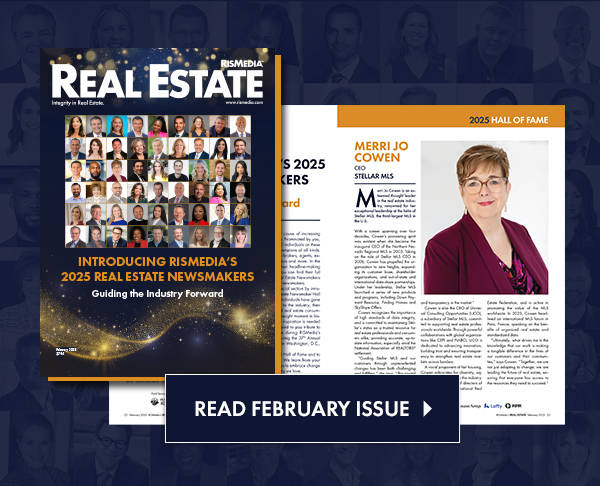As of the end of 2015, there were 6.4 million (6,436,381) U.S. properties seriously underwater — where the combined loan amount secured by the property is at least 25 percent higher than the property’s estimated market value — representing 11.5 percent of all properties with a mortgage, according to the RealtyTrac® Year-End 2015 U.S. Home Equity & Underwater Report.
The report is based on publicly recorded mortgage and deed of trust data collected and licensed by RealtyTrac nationwide along with an industry standard automated valuation model (AVM) updated monthly on RealtyTrac’s entire database of more than 140 million U.S. properties (see full methodology below).
The year-end 2015 seriously underwater properties were down 481,292 from 6.9 million (6,917,673) representing 12.7 percent of all properties with a mortgage at the end of the third quarter of 2015 and down 616,189 from 7.1 million (7,052,570) representing 12.7 percent of all properties with a mortgage at the end of 2014. The number of seriously underwater properties at the end of 2015 was half the 12.8 million (12,824,279) representing 28.6 percent of all properties with a mortgage in Q2 2012, the peak for seriously underwater properties.
“Over the past three and a half years, the number of seriously underwater properties has been cut in half, but we continue to deal with a long tail of seriously underwater properties, and it will likely be another five years at least before most of those remaining underwater properties move into positive equity territory,” says Daren Blomquist, vice president at RealtyTrac. “At the other end of the spectrum, the growing number of equity rich properties reflects a moribund move-up market and restrained leveraging of home equity by U.S. homeowners.”
As of the end of 2015 there were 12.6 million (12,621,274) U.S. properties that were equity rich (at least 50 percent equity), representing 22.5 percent of all properties with a mortgage. The number of equity rich properties at the end of 2015 was up 2.1 million (2,145,015) from the 10.5 million (10,476,259) representing 19.2 percent of all properties with a mortgage at the end of Q3 2015 and up 1.4 million (1,371,628) from the 11.2 million (11,249,646) representing 20.3 percent of all properties with a mortgage at the end of 2014.
Markets with the Highest and Lowest Share of Seriously Underwater Properties
Among metropolitan statistical areas with a population of at least 500,000, those with the highest share of seriously underwater properties as of the end of 2015 were Las Vegas, Nev. (27.7 percent), Lakeland, Fla. (24.4 percent), Cleveland (24.2 percent), Akron, Ohio (22.5 percent), and Orlando, Fla. (22.2 percent).
Markets with the lowest share of properties seriously underwater as of the end of 2015 were San Jose, Calif. (1.8 percent), San Francisco (3.8 percent), Austin, Texas (3.9 percent), Portland, Ore. (4.2 percent), and Boston, Mass. (4.2 percent).
Markets with the Highest and Lowest Share of Equity Rich Properties
Among metropolitan statistical areas with a population of at least 500,000, those with the highest share of equity rich properties as of the end of 2015 were San Jose, Calif. (53.7 percent), San Francisco (47.6 percent), Honolulu, Hawaii (36.7 percent), Los Angeles (35.8 percent), and Pittsburgh, Pa. (35.0 percent).
Markets with the lowest share of equity rich properties as of the end of 2015 were Memphis, Tenn. (11.4 percent), Dayton, Ohio (12.1 percent), Indianapolis, Ind. (12.4 percent), Las Vegas, Nev. (13.1 percent), and Cleveland, Ohio (13.3 percent).
Half of All Properties in Foreclosure Now Have Some Equity, a New High
As of the end of 2015, 49.7 percent of all homes in foreclosure had some equity, the highest percentage since RealtyTrac began tracking in Q3 2013. The share of in-foreclosure properties with equity at the end of 2015 was up from 43.3 percent as of the end of Q3 2015 and up from 34.6 percent as of the end of 2014.
Among metropolitan statistical areas with a population of at least 500,000, those with the highest percentage of foreclosure homes with equity were Denver (89.6 percent), Austin, Texas (88.8 percent), San Jose, California (87.5 percent), Pittsburgh (85.3 percent), and Nashville (83.6 percent).
As of the end of 2015, 28.4 percent of properties in foreclosure were seriously underwater, down from 33.4 percent at the end of the third quarter of 2015 and down from 34.6 percent at the end of 2014 to the lowest level since RealtyTrac began tracking this metric in the first quarter of 2012.
Markets with the highest percentage of in-foreclosure properties that were seriously underwater were Las Vegas, Nevada (50.2 percent seriously underwater), Chicago, Ill. (46.7 percent), Lakeland, Fla. (46.1 percent), Cleveland, Ohio (45.1 percent), and Deltona-Daytona Beach-Ormond Beach, Fla. (44.9 percent).
Profile of Seriously Underwater Properties
Some characteristics of the 6.4 million U.S. properties seriously underwater as of the end of 2015:
- 41% of seriously underwater properties were non-owner occupied, while 59%were owner-occupied
- 57% of seriously underwater properties had been owned 10 years or less, while 43% had been owned more than 10 years
- 63% of seriously underwater properties had a loan originated in 2008 or earlier, while 37% had a loan originated in 2009 or later
- 33% of all properties valued $100,000 or less were seriously underwater, while 8.7% of properties valued more than $100,000 were seriously underwater
Profile of Equity Rich Properties
Some characteristics of the 12.6 million equity rich U.S. properties as of the end of 2015:
- 23% of equity rich properties were non-owner occupied, while 77 percent were owner-occupied
- 62% of equity rich homes had been owned for more than 10 years, while 38% had been owned for 10 years or less
- 52% of equity rich homes had a loan originated in 2009 or later, while 48% had a loan originated in 2008 or earlier
- 47% of all properties valued more than $1 million were equity rich, while 21.7%of properties valued $1 million or less were equity rich
For more information, visit www.realtytrac.com.










